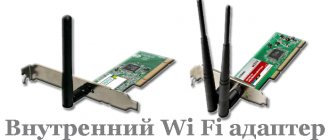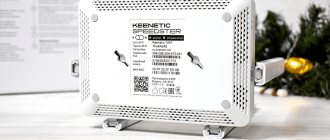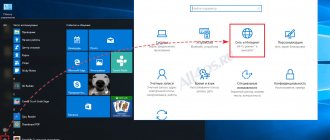This article answers the question: how to hide a Wi-Fi network and connect to this hidden network? Many Wi-Fi users have noticed that when connecting to their own network or a friend’s network, in the list of possible networks there are a great many names of Wi-Fi networks whose routers are located nearby. So, some users are wondering whether it is possible to hide their own network from the list of possible ones for neighbors (well, so that the name of our network is not seen, for example, by neighbors at home) and, if so, how to do this, and then connect to their hidden WI-FI network?
Hiding a wi-fi network (SSID) is quite simple:
So: how to hide a Wi-Fi network on Rostelecom D-Link, TP-Link routers and connect to it in Windows 10 - Windows 7 - 8, Android, MacOS...
post sections:
- how to hide Rostelecom Wi-Fi network
- how to hide Wi-Fi network D-Link - SSID
- hide TP-Link network - SSID
- how to connect to a hidden Wi-Fi network
- connecting to a hidden Wi-Fi network in Windows 10 and earlier versions
- how to connect to a hidden wi-fi network Windows 7 and Windows 8
- how to connect to a hidden network on Android
- connect to a hidden Wi-Fi network from iPhone and iPad
- connect to a hidden wi-fi network in MacOS
how to hide Rostelecom Wi-Fi network
In this section I will describe the steps in more detail, and in the following I will give only the principle so as not to spread too much.
Hiding the wi-fi network, as mentioned, is simple: to achieve these goals we need to visit the settings of our router. You probably already know about them...
Type the following address in the address bar of your browser: https://192.168.0.1/ - this is for Rostelecom.
For other providers, the following are usually used: 192.168.0.1 or 192.168.1.1.
In the article we will assume that you know the login and password from the settings of your wi-fi router (that is, you have access to them): for those who have forgotten the wi-fi network password, or how to find out the wi-fi network password in Windows 7, 8 and Windows 10. How to see who is connected to my Wi-Fi. Wi-fi router ONT Huawei HG8245H - technical data, capabilities. Doesn't connect to Wi-Fi. The phone says Saved
...or, if your Router was installed fairly recently and you have not changed any of its settings, then the login and password are usually the following: admin and admin
We enter the Router Settings: the path is as follows - Network / WLAN (Wireless Network) / WiFi Network Settings
Click the sections of the vertical (left) menu in order...
Next, all you have to do is check the box next to the “Hide wi-fi network” setting
...after that, be sure to confirm (Save) the settings -
Now your network will be invisible to nearby devices! that is, your neighbors will not see your network in the list of possible ones.
Since we are talking about Internet communications in this section, I think it wouldn’t be superfluous for me to mention to readers the technical organization of the users’ workspace... As you know, for smooth operation one or another technical equipment is often required, for example, connecting cables like amphenol cable -
...this is a multi-pair interface cable, usually terminated on one side with a 50-pin plug (or /less often/ on both sides).
You can view the manual in more detail by following the link above...
Changing the network name
Many people are interested not only in how to find out the SSID of a Wi-Fi network, but also in how to change it. The specifics of changing the name largely depend on the router model used.
TP-Link
TP-Link routers differ in firmware versions, which may have different menus. If the router settings have a blue interface, you can view and change the SSID as follows:
- Click on the “Basic setup” sign at the top of the screen.
- Go to wireless network settings.
- Change the ID and, if necessary, password.
If the router has a green web interface, the parameters change as follows:
- Go to the “Wireless Mode” menu.
- Open settings.
- Change the name.
- Click on the “Save” button.
Asus
The “General” tab contains basic settings for modems from Asus.
Some people connect their TVs and phones to the Internet using Asus routers. To change the name in them, you need to do the following:
- Go to advanced options.
- Click on Wireless network settings.
- Go to the “General” submenu.
- Find the text field with the SSID and enter the new data.
- If necessary, change the password and save the changes.
Important! Be sure to click on the “Apply” button after changing the parameters. If this is not done, everything will have to be configured again.
D-link
Many Internet users have a D-Link router installed in their apartment. To change router settings, you must perform the following sequence of actions:
- Go to your personal account. This is where the main parameters that the user can change are located.
- Go to the “Wi-Fi” tab and go to “Main Settings”.
- Find the line “SSID” and enter a new name for the connection.
- Go to security settings.
- Change the default password and enter a new one.
- Click on the “Apply” button.
Keenetic
Setting up modems from Eltex Keenetic is not much different from changing parameters in models from other manufacturers. To change the name, you will need to do the following:
- Go to the device web interface.
- Go to the menu for changing Wi-Fi settings.
- Open the “Connection” submenu.
- Find the “Name” line and enter a combination of letters and numbers.
- Click on “Apply” to save the changes made.
Additional Information! If desired, you can change the password. To do this, you will have to go to the “Security” tab.
Tenda
The wireless network parameters in Tenda models are located in “Wireless Settings.”
Some people decide to buy Termux Tenda routers to organize a home network. They are configured as follows.
- Go to the router interface.
- Go to wireless network settings.
- Find the field with the connection name and change it.
- Save your changes.
how to hide Wi-Fi network D-Link - SSID
Hiding the SSID (wi-fi network) on all the most common D-Link routers will be fundamentally simple, if you exclude some design differences in the settings interface.
Step 1: in the router settings, open the Wi-Fi section, then go to “Basic settings” (in earlier versions, go to “advanced settings”, then “Basic settings” and only then to “Wi-Fi”; in older versions of routers (its firmware) “Configure manually” and find the basic wireless network settings).
2 o. (Pay attention to the “Broadcast wireless network” setting - there is explanatory text under the checkbox, read it for yourself...)
Don't forget to click "Edit" and "Save"...
Start testing... if you couldn’t save the settings (this happens), repeat the described operation again...
This way you will hide your D-Link wi-fi network.
What is an SSID and what is it for?
You need to understand in advance what the SSID of a Wi-Fi network is. This is the name of the wireless connection, which most often consists of the name of the router model.
It is displayed on smartphones, laptops and other devices when connected to Wi-Fi. Users can change the router name if they wish. This can be done using a special mobile application or in the modem settings.
Additional Information! The abbreviation SSID stands for Service Set Identifier, which translated into Russian means “network identifier”.
hide TP-Link network - SSID
On all kinds of TP-Link routers from the WR740N, 741ND, TL-WR841N and up to ND models, it is possible to hide the Wi-Fi network (SSID) in the “Wireless mode” and “Wireless mode settings” options section...
To hide the TP-Link wi-fi network - SSID - you just need to check the box “Enable SSID broadcast”.
Save the settings... log out and connect to the network again...
general information
A regular Wi-Fi access point has 2 parameters: SSID and BSSID. The first is the name of the network, for example, “Andrey’s router”. When the router is turned on, the SSID is “broadcast” into the general airwaves.
BSSID is the technical address of the access point. Its data is not transmitted publicly, and you can only connect manually by setting the connection parameters (SSID name, encryption protocol, password).
Accordingly, when the router operates in standard mode, it “broadcasts” its SSID to all surrounding devices and can be detected. But if you enable the “Hide SSID” function in its settings, then the name broadcast will stop, and only the BSSID will be visible to surrounding devices.
Such an access point can only be detected using special software (and a compatible Wi-Fi adapter). But it is very difficult to “hack” it, since you will need to compromise not only the password, but also the SSID. And this is almost impossible.
For this reason, it is recommended to hide the SSID - this is the most reliable way to protect Wi-Fi from hacking (and unauthorized connection).
how to connect to a hidden wi-fi network Windows 7 and Windows 8
In Windows 7 and 8, the connection steps are slightly different: let's look at them:
1 - Go to the Network and Sharing Center (you can click on the “network” icon in the tray).
2 - feel free to click “Create and configure a new connection or network”...
For Windows 7:
And…
follow the prompts... enter the network name and password...
For Windows 8:
So…
…So:
As soon as the data is entered, the computer will automatically connect to the network!
If you cannot connect, then delete the previous (open wi-fi) network of the same name.
Finding SSID on your phone
Many people don't know how to find the SSID of a Wi-Fi network to connect to on their phone. To find out the name of the network, you can use Samsung smartphones on Android or iPhone on iOS. Any of these mobile devices allows you to find out the SSID. To do this, you need to go to the connection settings and turn on Wi-Fi. A list of all available connections will then appear on the display.
Important! To find your router on your iPhone, you need to look for connections whose name indicates the model of the router installed at home.
How to choose a password?
The best way to protect Wi-Fi from strangers is to set a strong password on your router and router. The mistake of many is that they install simple keys that are easy to find using programs or just guess. To avoid being hacked, consider the following tips when choosing your password:
- do not use separate numbers and words;
- try not to tie the security key to dates, names, important events, etc.;
- forget about using personal information when setting a secret code for Wi-Fi;
- do not replace a simple word with similar English letters, for example, [email protected] , because such tricks are easy to solve;
- do not store the security code on an unencrypted PC or in a mailbox;
- use different passwords for each case, because otherwise, when receiving one code, the attacker will be able to find out other data.
All of these tips are useful and help protect your network. The only controversial issue is recording the key for Wi-Fi. It can be recorded, but not on a PC, but in a personal notebook. Alternatively, use a password storage program with strong encryption.
When coming up with a key, consider the following tips:
- use at least eight characters (preferably 12 or more);
- mix lowercase and uppercase letters, because passwords take this into account;
- put the numbers in the middle, because in this case hacking becomes more difficult;
- add special characters like @, %, *, & and others.
If possible, make a password of several words, because spaces are allowed in the security key. This decision complicates the selection.
What is WPS on Wi-Fi?
Wi-Fi Protected Setup (WPS) is a feature supported by many routers. It is designed to facilitate the process of connecting a computer or other device to a secure wireless network.
Interesting materials:
How to check those connected to a Wi-Fi network? How to check connected users to Wifi? How to check if the speakers are connected on a laptop? How to check foreign connections to the router? How to check the router for connection? How to check how many people are connected to Wifi? How to check how much is connected to Wifi? How to check how many devices are connected to the router? How to check how many devices are connected to Wifi? How to check how many users are connected to Wifi?
Features of MultiSSID technology
MultiSSID - allows you to use a guest network
MultiSSID is a unique technology with which you can create several Wi-Fi connections on one modem at once. For example, a person can make one main connection and 2-3 guest connections.
Using MultiSSID also allows you to significantly reduce the load on the network. Thanks to this, it is possible to increase the stability of the connection.
Important! This function is present only in modern router models.
What should I do if I can't connect?
If the user has forgotten the name or other data of the hidden network, and it is not possible to connect the router with a cable, then the only way out is to reset the settings to factory settings and force the broadcasting of the SSID name.
In most router models, this is done by pressing the Reset button for 5 - 10 seconds (in some you need to use the WPS button).
After this, the device can be set up as new, and the wireless connection will not be hidden by default.
What is the “Hide SSID” mode or hidden Wi-Fi network? This is the mode of operation of the access point in which it cannot be detected. But you can connect if you know three key parameters: the name of the network, the type of encryption, and the access key to it. You just need to enter all these settings manually, rather than selecting an available Wi-Fi network from the list.
Why make the network invisible?
What is the reason? Why do people resort to installing such a regime? The most common answer is to increase the security level of your Internet network. Many people believe that setting a good password is enough to solve this problem. But if anyone is tormented by paranoia in Internet matters, resort to the tips in this article and make your network invisible. This is not a very difficult manipulation. For a more detailed description, it is worth resorting to a real example - the Tp-link TL-WR841N rotor.
Upon completion of all stages of hiding the name of your network, one obvious change will occur - the connection process will become different. Those gadgets that you have and that you want to connect to your router will have to be slightly tortured. And not only them, but also yourself. This means that access to the wireless Internet can only be achieved through manual configuration. Quite an inconvenient procedure.











